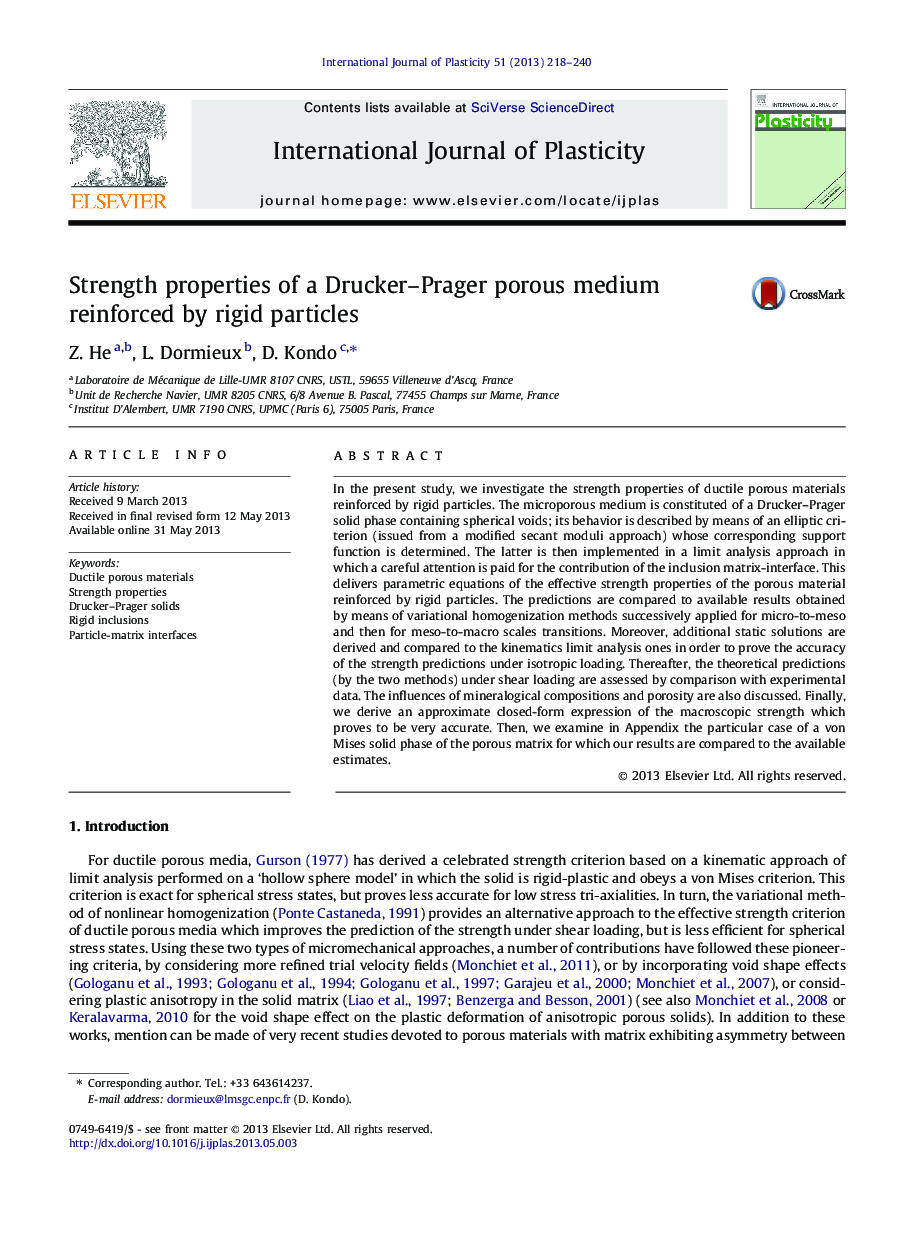| Article ID | Journal | Published Year | Pages | File Type |
|---|---|---|---|---|
| 789118 | International Journal of Plasticity | 2013 | 23 Pages |
•We investigate the strength ductile porous materials (with a Drucker-Prager solid phase) reinforced by rigid particles.•To this end, we implement a two steps micro–macro procedure based on Limit analysis theory.•We provide parametric equations as well as closed-form approximate expression of the macroscopic criterion.
In the present study, we investigate the strength properties of ductile porous materials reinforced by rigid particles. The microporous medium is constituted of a Drucker–Prager solid phase containing spherical voids; its behavior is described by means of an elliptic criterion (issued from a modified secant moduli approach) whose corresponding support function is determined. The latter is then implemented in a limit analysis approach in which a careful attention is paid for the contribution of the inclusion matrix-interface. This delivers parametric equations of the effective strength properties of the porous material reinforced by rigid particles. The predictions are compared to available results obtained by means of variational homogenization methods successively applied for micro-to-meso and then for meso-to-macro scales transitions. Moreover, additional static solutions are derived and compared to the kinematics limit analysis ones in order to prove the accuracy of the strength predictions under isotropic loading. Thereafter, the theoretical predictions (by the two methods) under shear loading are assessed by comparison with experimental data. The influences of mineralogical compositions and porosity are also discussed. Finally, we derive an approximate closed-form expression of the macroscopic strength which proves to be very accurate. Then, we examine in Appendix the particular case of a von Mises solid phase of the porous matrix for which our results are compared to the available estimates.
